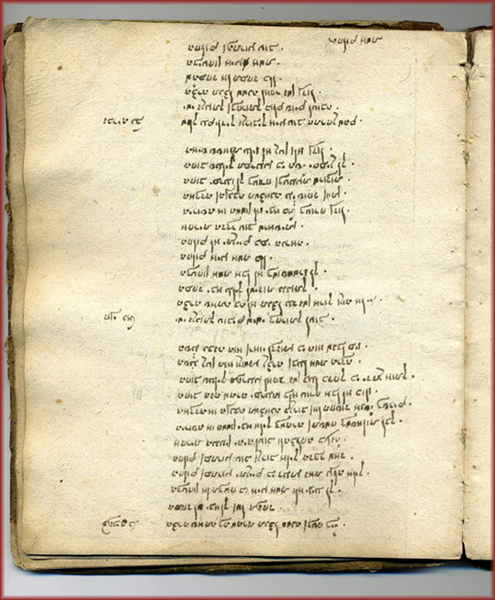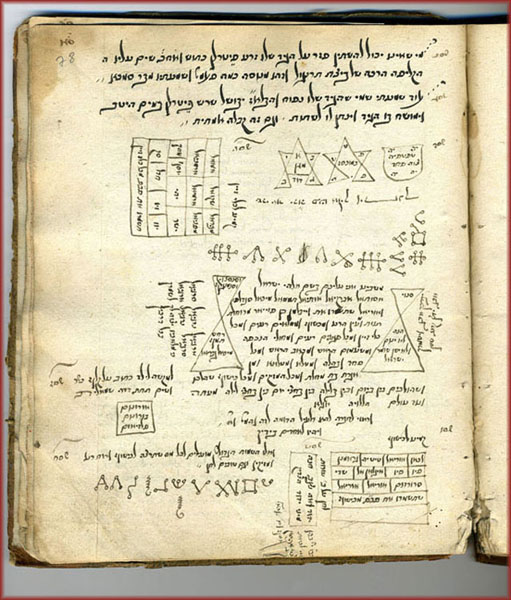

 |
 |
Left: Folio 16 of the manuscript, which contains the author's
autobiographical information.
Right: Folio 78, showing some of the diagrams in the manuscript.
In 1596, a scribe living in Vengrov named "Uri, son of R. Eliezer... who is called Leibman Ashkenazi" wrote a manuscript which has survived to the present day. According to an autobiographical note, his work was completed the week that parshah Netzavim was read in the synagogue in the Hebrew year 5356, which corresponds to September, 1596 in the secular calendar.
Written in Hebrew and Yiddish, the manuscript contains "one large circular calendar diagram and two large mnemonic devices in the shape of the Star of David and several smaller illustrations of magical symbols and Stars of David ..... [It is] one of only 15 Yiddish medical manuscripts dating before the seventeenth century and one of the few surviving medieval manuscripts from Poland, the only one from Vengrov."
The first part of the manuscript consists of "miscellaneous kabalistic and folk texts, relating to fortune, charms, amulets, [and] signs of the zodiac," accompanied by sketches of amulets. The second part is “a collection of medications with original additions of the writer himself." The manuscript also includes the text of Goralot [The Casting of Lots], by Abraham ibn Ezra (1093-1167); kabbalistic commentaries on magical usages of the Holy Names; a kabbalistic treatise entitled Sefer ha-Iyyun [Book of Speculation]; and Sefer Refuot [Book of Medicine], which includes "medical recipes, kabbalistic prayers, and magical charms, spells and amulets, [the source of which] was obviously Jewish as it includes Jewish prayers and references to Jewish rituals."
It would appear from his marginal notes (e.g. "This [medication] I tried and was proven with a baby from the holy community of Vengrov") that in addition to being a scribe, Uri ben Eliezer also was a physician. The inclusion of material about amulets, kabbalistic treatises, etc. in what appears to be a predominantly medical text should not be surprising as, in medieval times, the distinction between medicine, science, astronomy, astrology, and magic was not so finely drawn. In combining the medical with the kabbalistic, Uri ben Eliezer took his place in the great tradition of Jewish physician-mystics such as Shabbatai Donnolo and Moses ben Maimon.
On one occasion, Uri ben Eliezer wrote: "I heard from R. Yosef Karo that the entire partaking in lots is in violation of a commandment." From this, it would appear that Uri ben Eliezer either knew or was in touch with Rabbi Caro, the reknowned rabbinic scholar who was the author of the Shulchan Aruch. The manuscript suggests that there were those in Vengrov’s medieval community who possessed a high level of contemporaneous scholarship and erudition and that the town’s residents were fully engaged with the greater Jewish world.
Credits: Text and page design copyrighted © 2008 by Helene Kenvin. Photographs copyrighted © 2008 by Les Enluminures (Paris, France). We are grateful to Ariane Bergeron of Les Enluminures for her assistance in procuring photographs of the manuscript and permission for their use on this website. Page created by Helene Kenvin. All rights reserved.